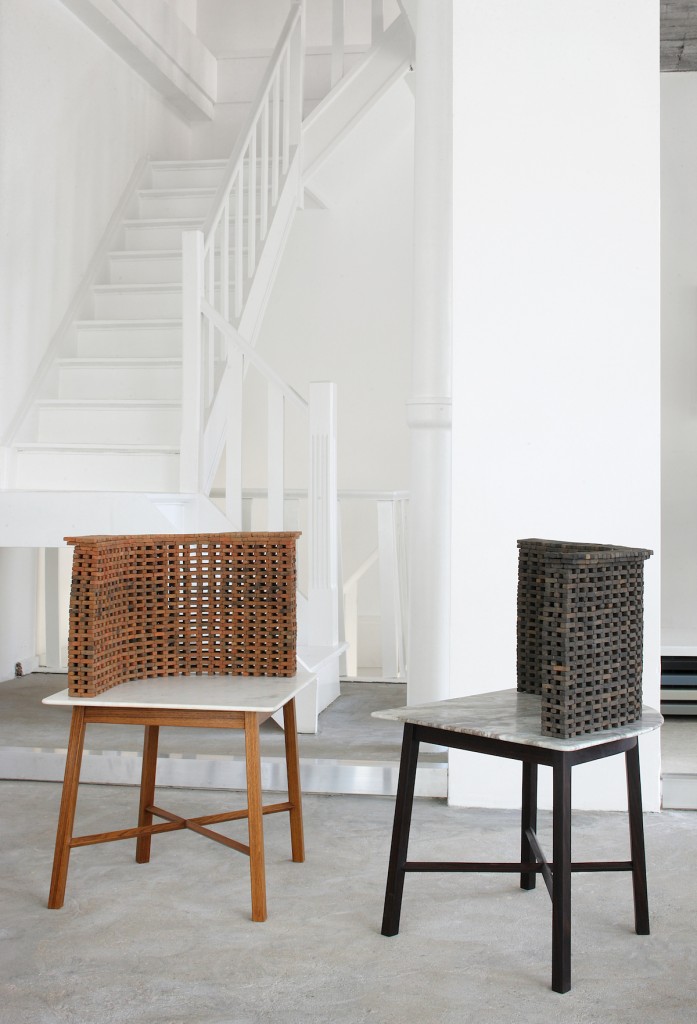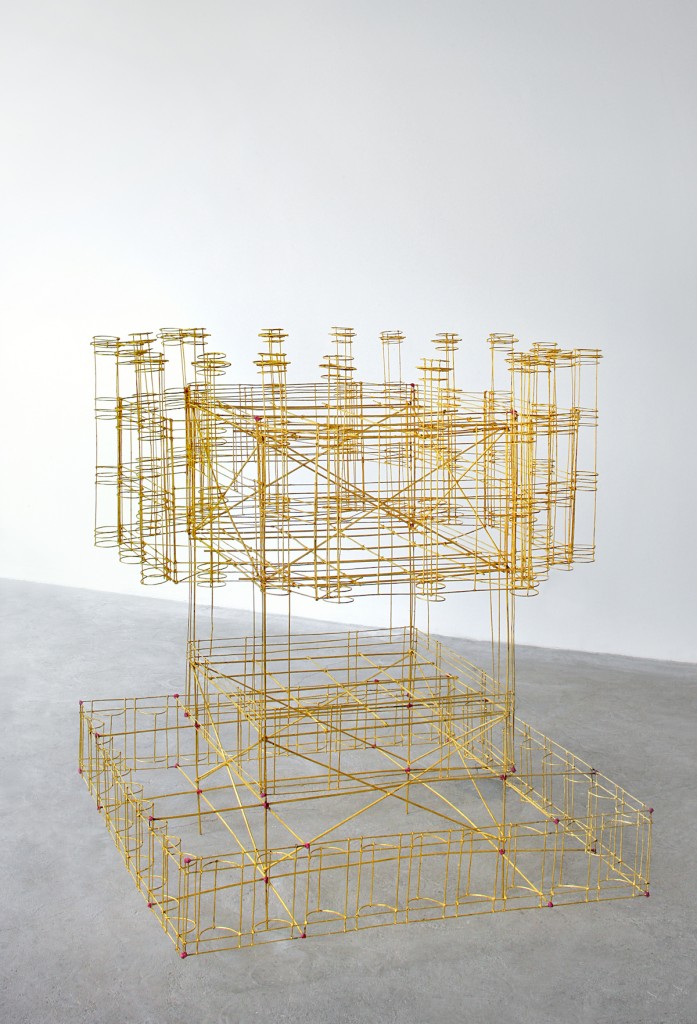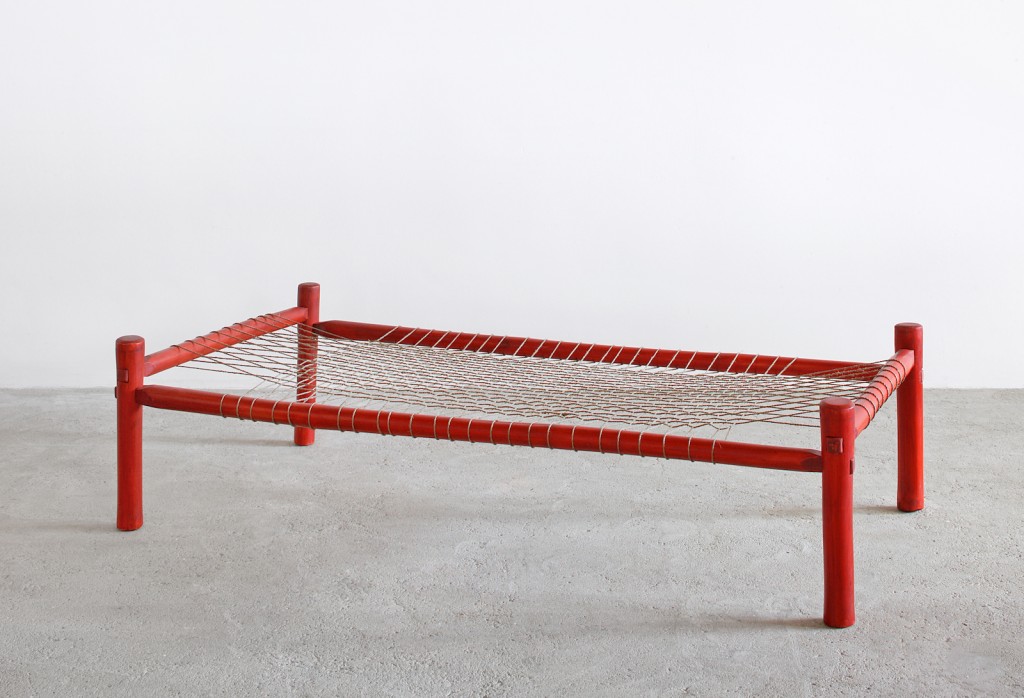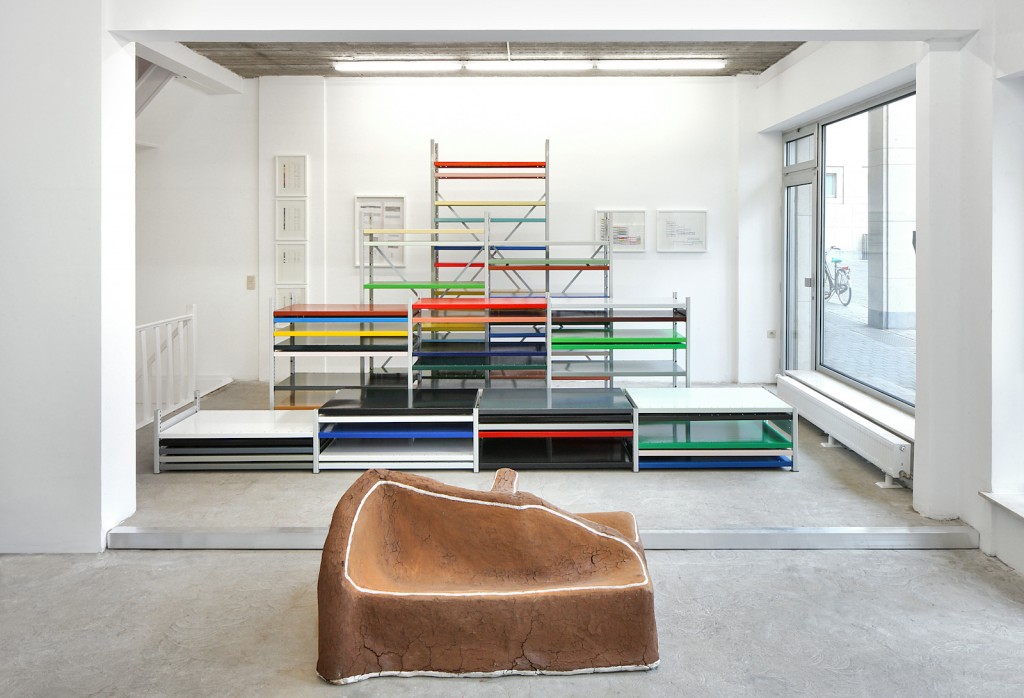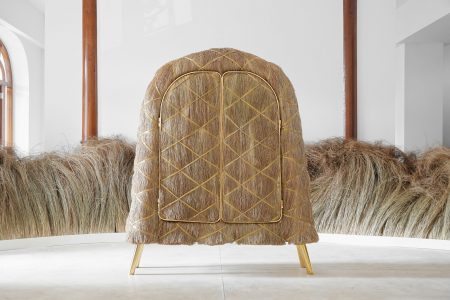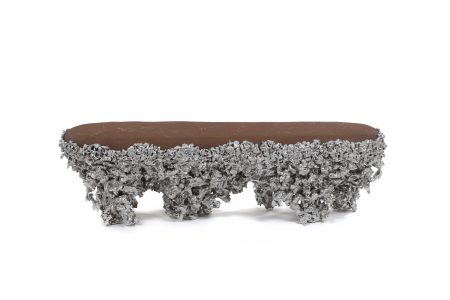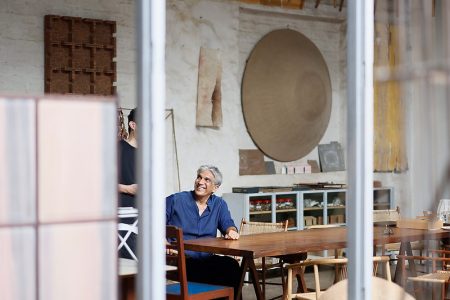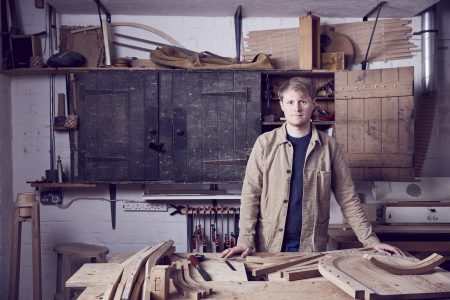Mumbai Goes MANIERA
For MANIERA 06, the Belgian gallery showcased handmade furniture from Bijoy Jain’s Studio Mumbai
How can a brick, a single brick, become a piece of furniture? This odd question propelled Bijoy Jain, the founder of Studio Mumbai, into an exploration of scale and intimacy. The Indian architect turned the idea of the stacked bricks used in large buildings into Brick Studies, one of the four furniture series for MANIERA.
“As an architect, the way you imagine opening a door, developing a chair, designing the texture of a wall or a floor, is very important,” said Jain. That’s the same approach he applied to the series for the Belgian gallery.
For Brick Studies, for example, the founder and his team baked mini bricks, true to scale, and glued them to each other to form backrests for seats, made from rosewood and marble.
Illumination Studies departed from the monuments transported on shoulders during Muharram month in India. Using thin bamboo sticks that mimic the original source, Studio Mumbai developed a light fixture with no bulb —using light-reflecting gold leaf, instead.
In Charpai Studies the team took the popular Indian daybed of the same name and built upon it to produce an iteration with shellac wood. “The idea here was not to create a replica, but rather to examine an existing object and continue working on it,” explained Jain.
And then there’s Landscape Studies, the final part of the series, which come from an analysis of agrarian realities in the country. The two pieces, sculpted using papier maché, bitumen and cow dung, don’t have a defined geometry —just like the landscape that inspired them.
These four studies belong to MANIERA 06, one of a series of functional works commissioned by the Brussels gallery.
